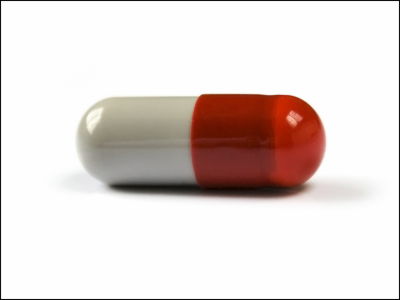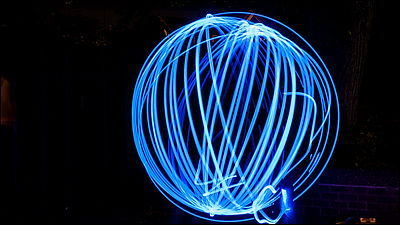Research reveals that all animals emit a faint light that disappears when they die

The theme of the official logo for the 2025 Osaka Expo is '
Imaging Ultraweak Photon Emission from Living and Dead Mice and from Plants under Stress | The Journal of Physical Chemistry Letters
https://pubs.acs.org/doi/10.1021/acs.jpclett.4c03546
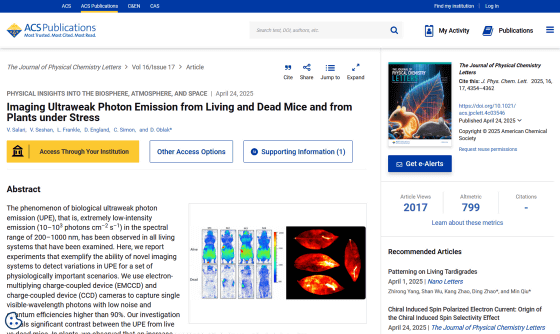
Living beings emit a faint light that extinguishes upon death, according to a new study
https://phys.org/news/2025-05-emit-faint-extinguishes-death.html
We Emit a Visible Light That Vanishes When We Die, Says Surprising New Study : ScienceAlert
https://www.sciencealert.com/we-emit-a-visible-light-that-vanishes-when-we-die-says-surprising-new-study
All living things emit a ghostly GLOW that vanishes when we die, scientists reveal | Daily Mail Online
https://www.dailymail.co.uk/sciencetech/article-14702143/living-things-emit-GLOW-scientists.html
Most animals and plants are thought to not emit light, but in recent years it has been discovered that photons are produced as a metabolic by-product of cells, and that living organisms emit these photons in a phenomenon known as ultraweak photon emission (UPE) .
The key to UPE is thought to be reactive oxygen species (ROS) that are produced when mitochondria in cells generate energy. Excessive ROS can cause oxidative stress, which can induce the excitation and transfer of electrons, resulting in UPE.
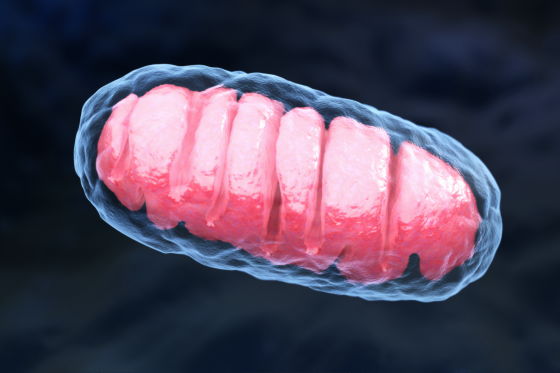
UPE has already been observed in a variety of species, from single-celled organisms, plants, animals, and even humans. However, while bioluminescence produces light visible to the naked eye, the photons emitted by UPE are tiny and not strong enough for the human eye to see. This makes UPE extremely difficult to detect and difficult to distinguish from other natural light sources, such as radiation emitted by warm objects.
So this time, a research team led by Vahid Salari, a physicist at
In the experiment, four live mice were placed in a dark, temperature-controlled box to eliminate interference from ambient light. The UPE emitted from the mice was captured for one hour using a Charge-Coupled Device (CCD) camera equipped with an In Vivo Imaging System (IVIS) that detects weak light, and an Electron-Multiplying Charge-Coupled Device (electron multiplying CCD) camera with a special electron multiplying mechanism.
The mice were then euthanized while still in the box, and filmed for another hour. The mice were kept warm after death to prevent their body temperature from dropping, and to prevent fluctuations in their temperature between when they were alive and when they died.
As a result of the experiment, it was found that the number of photons emitted by the mouse was clearly different before and after death. The image below shows the amount of photons emitted by a mouse when it was alive (top) and a mouse after death (bottom). You can see that the UPE of the dead mouse is clearly reduced.
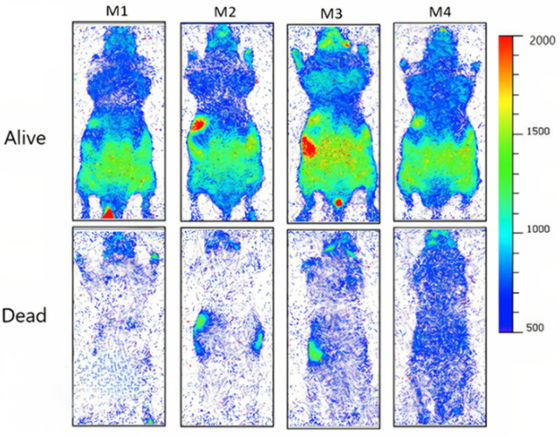
The research team also used
The images below show the change in the UPE of a leaf in response to temperature changes, A and B, and the graph of the amount of photons, C. As you can see, the UPE increases as the temperature increases.
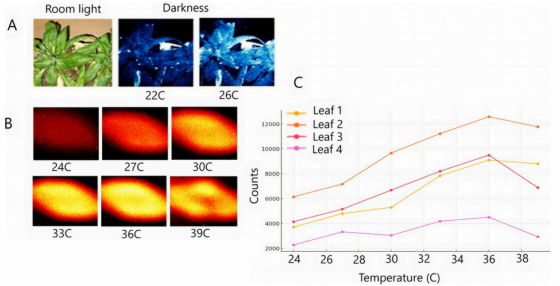
In addition, in experiments in which leaves were wounded and the UPE was observed, it was found that the UPE increased in areas that had been physically damaged. 'Our study shows that over the entire 16-hour imaging period, all damaged areas of the leaves were significantly brighter than undamaged areas,' the team said.
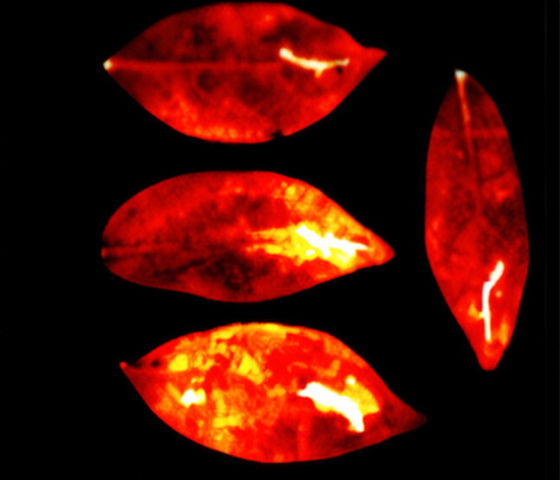
Unlike mice, whose photon emissions decreased immediately after death, the leaves of the plant continued to emit photons even after they were cut from the body. Dr. Michal Cifra , a biologist at the Czech Academy of Sciences who was not involved in the study, points out that the release of UPE is related to individual tissue cells. Cifra explained to the foreign media Daily Mail that the light disappears after death because the tissue stops receiving oxygen, which stops metabolism.
The research suggests that UPE could potentially be used in medical testing: by observing the amount of photons produced, it might be possible to identify damaged tissue, monitor health conditions, or even investigate the progression of diseases such as Alzheimer's.
Related Posts:

